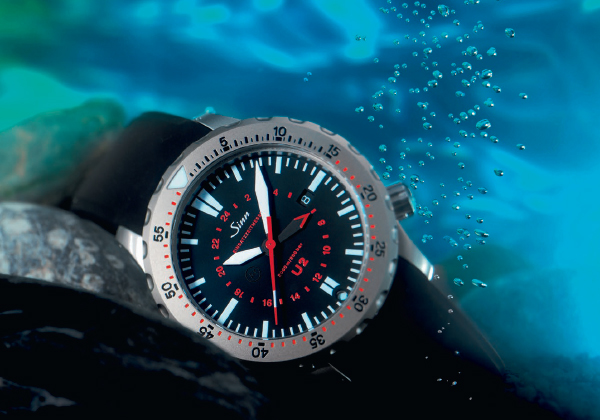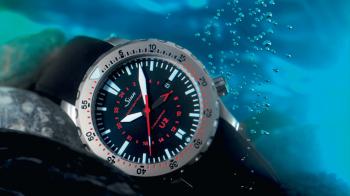Originally, the model was known as the Einsatzzeitmesser or ‘mission timer’, then as the EZM5, before the U2 name — much simpler and above all international — was finally settled on. Launched in 2005, the new moniker denoted the timepiece as an heir to the U1. Sinn likes everything to be straightforward and functional, so the explanation for the names is simple: the U1 is water-resistant to 1,000 metres, the U2 to 2,000 metres.
Deutsche Qualität
Right from the outset, Sinn played on the U2 name ultimately adopted for the watch to draw a parallel with the submarine of the same name, commissioned in 1935 and sunk nine years later west of Kaliningrad. And indeed, the U2 is made of submarine steel, just like its elder sister the U1. This makes sense in more ways than one: not only is the steel in question made locally by German firm ThyssenKrupp, it can also withstand both high pressures and seawater corrosion, as well as being non-magnetic. The U2 was launched with the choice of steel bracelet or rubber strap, both fitted with a folding clasp.

More Hull than case
In addition to the case being water-resistant to 2,000 metres (and tested to 2,500m), as attested to by Germnischer Lloyd certification 50372-05 HH awarded on 10 July 2005 in Hamburg, Sinn has done three other things to make sure its U2 keeps out the slightest hint of moisture. Firstly, rather than containing ambient air (consisting of 78% nitrogen, 21% oxygen, and 1% argon) the case is filled with argon alone: a rare, inert gas that doesn’t react with any other gas likely to find its way to the heart of the movement.
The second security measure is that Sinn uses its own proprietary oil to lubricate the movement, reference 66-228. The lubricant has an extremely broad optimum operating temperature range of -45 °C to +80 °C, ensuring that wearers can dive with peace of mind in every conceivable marine environment to be found on planet Earth. The only way this operating range is likely to be exceeded is if someone goes for a dip on Mercury, which on the face of it seems unlikely…
The third safeguard is that the U2 has three dehumidifying capsules, installed right next to the movement. One of these is visible at 6 o’clock; the two others are hidden in its depths to ensure constant dehumidification. The capsules are filled with copper sulphate, or simply put, an anhydrous salt that doesn’t contain any water: the ideal substance to absorb any moisture that might somehow manage to enter the case. Should this happen, the moisture indicator at 6 o’clock would change colour.
Inventive and creative
The U2 has several other distinguishing features. For instance, its rotating bezel has been specially hardened, boasting a Vickers rating of 1500. By way of comparison, the Vickers ratings for steel and titanium are 160 and 970 respectively.
Meanwhile the seal is made of Viton, a proprietary material. Viton products are based on high-performance fluoroelastomers, giving them a longer lifespan and keeping them flexible, strong, and properly shaped in most extreme environments. According to Sinn, the U2 seal is four times more watertight than conventional watchmaking seals.
Another rare feature is that the U2 sports a second time zone — a good idea inasmuch as most deep dives happen in a very small number of regions of the globe that rarely coincide with the wearer’s usual place of residence.
This year GMT Magazine and WorldTempus have embarked on the ambitious project of summarising the divers watch since 2000 in The Millennium Watch Book - Divers watch, a big, beautifully laid out coffee table book. This article is an extract. The Millennium Watch Book - Divers watch is available in both French and English here:




